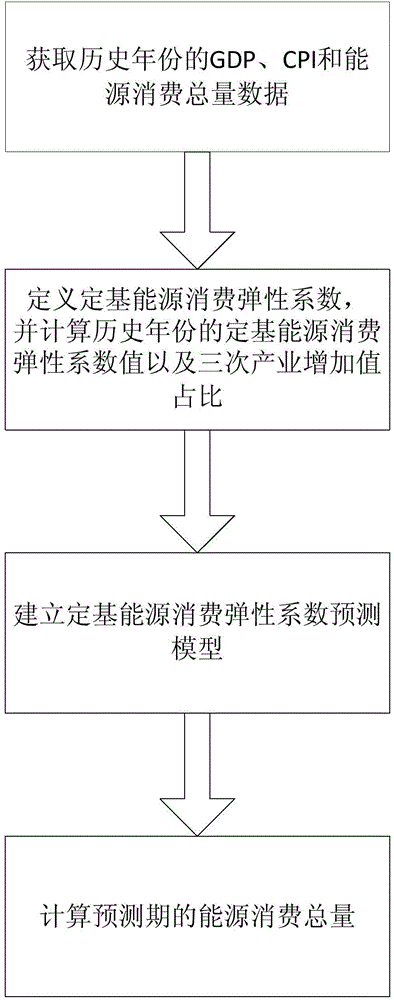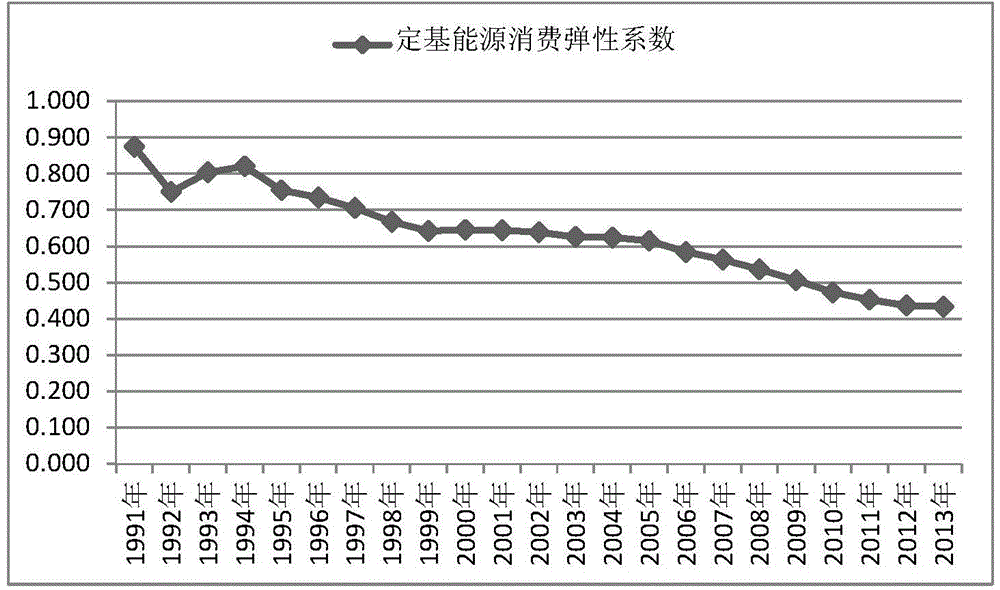Method for predicting total energy consumption on the basis of fixed base energy consumption elasticity coefficient
A technology of elastic coefficient and energy, applied in forecasting, data processing applications, instruments, etc., can solve problems such as lack of quantitative analysis, unstable time series, non-comparability, etc., and achieve the effect of eliminating the influence of price factors
- Summary
- Abstract
- Description
- Claims
- Application Information
AI Technical Summary
Problems solved by technology
Method used
Image
Examples
Embodiment Construction
[0028] Below, the present invention will be further described in conjunction with specific examples.
[0029] Taking the forecast of total energy consumption in Zhejiang Province in 2020 as an example, first construct a fixed-base energy consumption elasticity coefficient prediction model, secondly predict the fixed-base energy consumption elasticity coefficient in 2020, and finally calculate the total energy consumption forecast value in 2020. Such as figure 1 As shown, the method for predicting the total energy demand based on the fixed-base energy consumption elasticity coefficient includes the following steps:
[0030] S1. Obtain the GDP, CPI and total energy consumption data of N historical years adjacent to the forecast period;
[0031] In this embodiment, the relevant annual data of Zhejiang Province are used, and the data comes from the website of Zhejiang Provincial Bureau of Statistics. Taking 1991-2013 as the sample period and 2020 as the forecast period, the GDP,...
PUM
 Login to View More
Login to View More Abstract
Description
Claims
Application Information
 Login to View More
Login to View More - R&D
- Intellectual Property
- Life Sciences
- Materials
- Tech Scout
- Unparalleled Data Quality
- Higher Quality Content
- 60% Fewer Hallucinations
Browse by: Latest US Patents, China's latest patents, Technical Efficacy Thesaurus, Application Domain, Technology Topic, Popular Technical Reports.
© 2025 PatSnap. All rights reserved.Legal|Privacy policy|Modern Slavery Act Transparency Statement|Sitemap|About US| Contact US: help@patsnap.com



